Hyundai Accent: Engine Control System / Injector
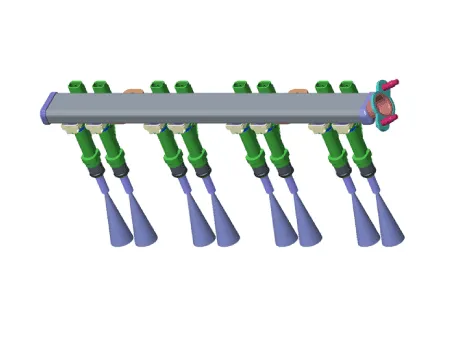
| Item | Specification |
| Coil Resistance (Ω) | 11.4 ~ 12.6 [20°C (68°F)] |
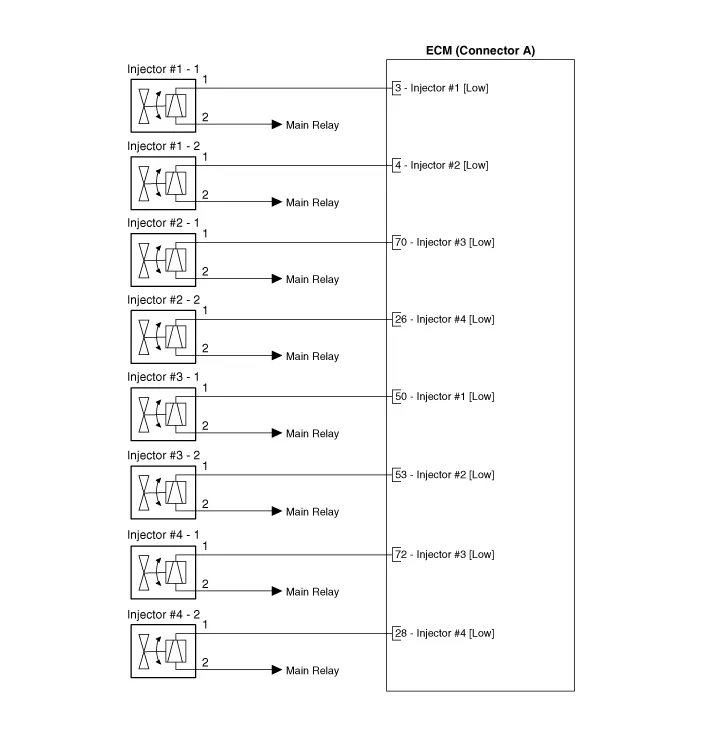
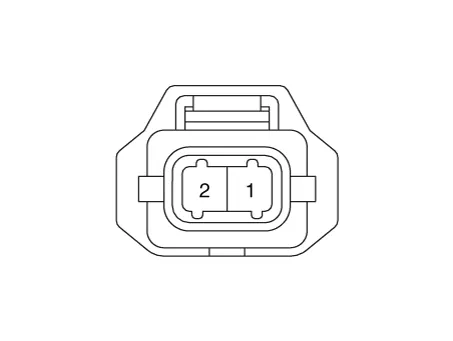
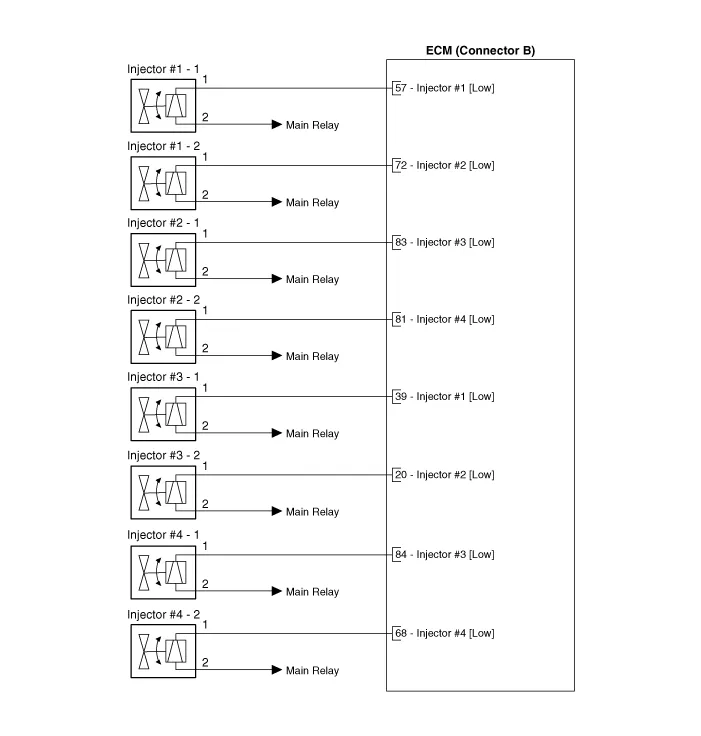
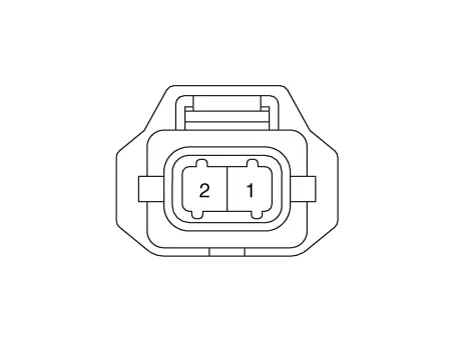
1.Turn ignition switch OFF.
2.Disconnect injector connector.
3.Measure resistance between injector terminals 1 and 2.
4.Check that the resistance is within the specification.
| Item | Specification |
| Coil Resistance (Ω) | 11.4 ~ 12.6 [20°C (68°F)] |

• In case of removing the high pressure fuel pump, high pressure fuel pipe, delivery pipe, and injector, there may be injury caused by leakage of the high pressure fuel. So don't do any repair work right after engine stops.
1.Turn the ignition switch OFF and disconnect the battery negative (-) cable.
2.Release the residual pressure in fuel line.(Refer to Fuel Delivery System - "Release Residual Pressure in Fuel Line")
3.Disconnect the harness wiring & injector connector.
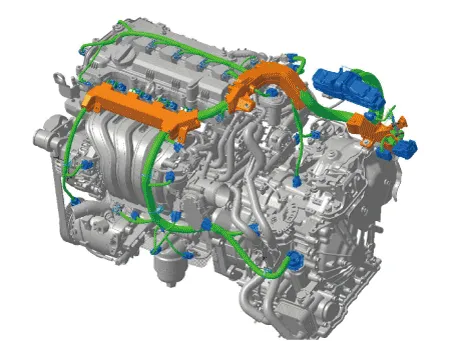
4.Remove the installation nut, and then disconnect the fuel feed tube (A).
Delivery pipe installation nut (↔ Fuel feed tube) : 9.8 - 11.8 N.m (1.0 - 1.2 kgf.m, 7.2 - 8.7 lb-ft)
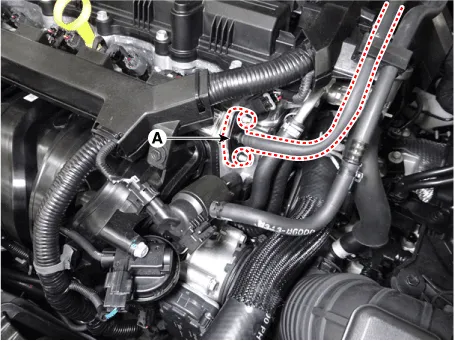
5.Remove the installation bolt (A), and then remove the delivery pipe & injector assembly from the engine.
Delivery pipe installation bolt :19.6 ~ 24.5 N.m (2.0 ~ 2.5 kgf.m, 14.5 ~ 18.1 lb-ft)
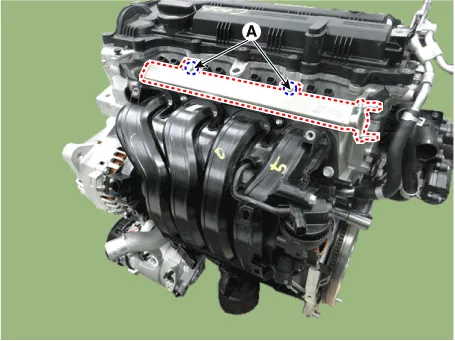
6.Remove the fixing clip (A), and then separate the injector from the delivery pipe.
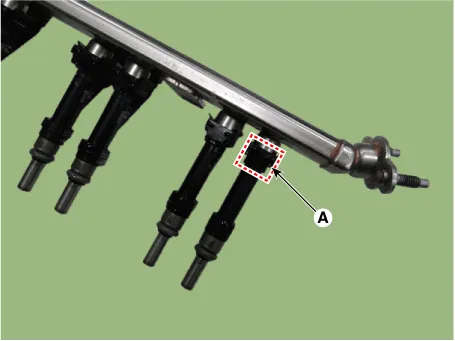

• Install the component with the specified torques.
• Note that internal damage may occur when the component is dropped. In this case, use it after inspecting.

• Apply the engine oil to the injector O-ring.

• Inspect the top of the injector for debris that could damage the filter mesh.
• Inspect the underside of the injector for bending in interference between other parts.
• After assembling the injectors, inspect and remove any magnetic materials that may affect the magnetic circuit.
• Inspect the injector O-ring when installing.
1.Install in the reverse order of removal.
Other information:
Hyundai Accent (HC) (2017 - 2022) Service Manual: Troubleshooting
- Troubleshooting SymptomPossible CauseRemedy One lamp does not light(all exterior)Bulb burned outReplace bulb Socket, wiring or ground faultyRepair if necessary Head lamps do not lightBulb burned outReplace bulb Ignition fuse (LOW:10A, HIGH:20A) blownCheck for short and replace fuse Head lamp fuse (15A) blownCheck for short and replace fuse Head lamp relay faultyCheck relay Lighting switch faultyCheck switch Wiring or ground faultyRepair if necessary Tail lamps and license plate lampHyundai Accent (HC) (2017 - 2022) Service Manual: Description and Operation
- Description System Overview The System offers the following features: – Human machine interface through a 1-stage button, for terminal switching and engine start. – Control of external relays for ACC / IGN1 / IGN2 terminal switching and STARTER, without use of mechanical ignition switch. – Steering column locking with an ESCL device; Monitoring of the vehicle status to insure safe activation of the ESCL.
Categories
- Manuals Home
- Hyundai Accent Owners Manual
- Hyundai Accent Service Manual
- New on site
- Most important about car


